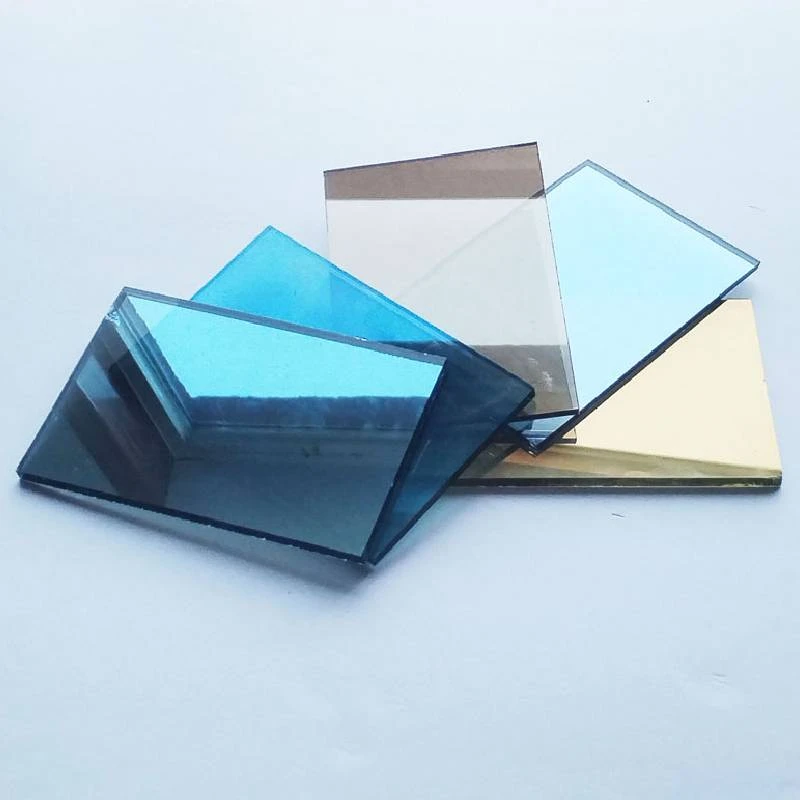Understanding Toughened Low-E Glass A Key to Energy Efficiency and Durability
In today's world, where energy efficiency and sustainability are at the forefront of architectural design and construction, toughened low-emissivity (low-E) glass has emerged as a favored material. This article explores the properties, benefits, and applications of toughened low-E glass, which makes it an indispensable choice for modern buildings.
What is Toughened Low-E Glass?
Toughened low-E glass, also known as tempered low-E glass, combines the benefits of low-emissivity coatings with the strength of toughened glass. Low-E glass is treated with a thin metallic coating that reflects infrared and ultraviolet light while allowing visible light to pass through. This coating helps reduce heat transfer, contributing to better energy efficiency in buildings. The toughening process involves heating the glass to high temperatures and then cooling it rapidly, which increases its strength and makes it more resistant to breaks and thermal stress.
Energy Efficiency
One of the most significant advantages of toughened low-E glass is its energy efficiency. Buildings account for a substantial portion of energy consumption, primarily through heating and cooling. By reducing the amount of heat that enters or escapes from a building, low-E glass plays a crucial role in minimizing energy use. This insulation property not only lowers energy bills but also helps in reducing the overall carbon footprint of the building.
In warmer climates, toughened low-E glass can reflect the sun's heat away from the building, keeping interiors cooler and reducing the need for air conditioning. Conversely, in colder climates, it minimizes heat loss, keeping buildings warmer during winter months. As a result, this glass can significantly improve a building’s energy performance ratings, helping it qualify for green building certifications.
Durability and Safety
The toughening process enhances the durability of low-E glass, making it substantially harder than ordinary glass. Toughened glass can resist the impact of possible hazards, like hail or debris, and is less likely to shatter upon impact. In case of breakage, it crumbles into small, blunt pieces instead of sharp shards, reducing the risk of injury. This safety feature is particularly important in commercial and public buildings, where the safety of occupants is a priority.
toughened low e glass
Additionally, toughened low-E glass is highly resistant to thermal stress caused by temperature fluctuations. This makes it ideal for applications in regions with extreme weather conditions, ensuring the longevity and reliability of the structure.
Aesthetic Appeal
Beyond its practical advantages, toughened low-E glass also enhances the aesthetic appeal of buildings. With its clear, transparent finish, it allows for maximum natural light penetration while providing unobstructed views. This quality is especially valuable in residential settings, where homeowners often desire large windows to showcase outdoor landscapes. Architects increasingly integrate toughened low-E glass into modern designs, creating facades that are both functional and visually striking.
Applications and Future Trends
Toughened low-E glass is versatile and can be used in various applications, including residential homes, commercial buildings, and public infrastructure. Its usage extends to window installations, curtain walls, facades, and skylights. The growing trend towards energy-efficient building solutions means that demand for toughened low-E glass is likely to increase.
Furthermore, advancements in technology are paving the way for even better performance characteristics in low-E coatings. Innovations in nanotechnology may soon lead to the development of super low-E glass, which promises to further enhance thermal insulation and increase energy savings.
Conclusion
In summary, toughened low-E glass stands out as a paramount material in the quest for energy efficiency, safety, and aesthetic appeal in modern architecture. Its ability to minimize energy costs while providing durability and safety makes it an excellent investment for building owners and developers alike. As the construction industry moves toward sustainable practices, toughened low-E glass will undoubtedly continue to play a crucial role in shaping the future of energy-efficient buildings.
 Afrikaans
Afrikaans  Albanian
Albanian  Amharic
Amharic  Arabic
Arabic  Armenian
Armenian  Azerbaijani
Azerbaijani  Basque
Basque  Belarusian
Belarusian  Bengali
Bengali  Bosnian
Bosnian  Bulgarian
Bulgarian  Catalan
Catalan  Cebuano
Cebuano  Corsican
Corsican  Croatian
Croatian  Czech
Czech  Danish
Danish  Dutch
Dutch  English
English  Esperanto
Esperanto  Estonian
Estonian  Finnish
Finnish  French
French  Frisian
Frisian  Galician
Galician  Georgian
Georgian  German
German  Greek
Greek  Gujarati
Gujarati  Haitian Creole
Haitian Creole  hausa
hausa  hawaiian
hawaiian  Hebrew
Hebrew  Hindi
Hindi  Miao
Miao  Hungarian
Hungarian  Icelandic
Icelandic  igbo
igbo  Indonesian
Indonesian  irish
irish  Italian
Italian  Japanese
Japanese  Javanese
Javanese  Kannada
Kannada  kazakh
kazakh  Khmer
Khmer  Rwandese
Rwandese  Korean
Korean  Kurdish
Kurdish  Kyrgyz
Kyrgyz  Lao
Lao  Latin
Latin  Latvian
Latvian  Lithuanian
Lithuanian  Luxembourgish
Luxembourgish  Macedonian
Macedonian  Malgashi
Malgashi  Malay
Malay  Malayalam
Malayalam  Maltese
Maltese  Maori
Maori  Marathi
Marathi  Mongolian
Mongolian  Myanmar
Myanmar  Nepali
Nepali  Norwegian
Norwegian  Norwegian
Norwegian  Occitan
Occitan  Pashto
Pashto  Persian
Persian  Polish
Polish  Portuguese
Portuguese  Punjabi
Punjabi  Romanian
Romanian  Russian
Russian  Samoan
Samoan  Scottish Gaelic
Scottish Gaelic  Serbian
Serbian  Sesotho
Sesotho  Shona
Shona  Sindhi
Sindhi  Sinhala
Sinhala  Slovak
Slovak  Slovenian
Slovenian  Somali
Somali  Spanish
Spanish  Sundanese
Sundanese  Swahili
Swahili  Swedish
Swedish  Tagalog
Tagalog  Tajik
Tajik  Tamil
Tamil  Tatar
Tatar  Telugu
Telugu  Thai
Thai  Turkish
Turkish  Turkmen
Turkmen  Ukrainian
Ukrainian  Urdu
Urdu  Uighur
Uighur  Uzbek
Uzbek  Vietnamese
Vietnamese  Welsh
Welsh  Bantu
Bantu  Yiddish
Yiddish  Yoruba
Yoruba  Zulu
Zulu 

